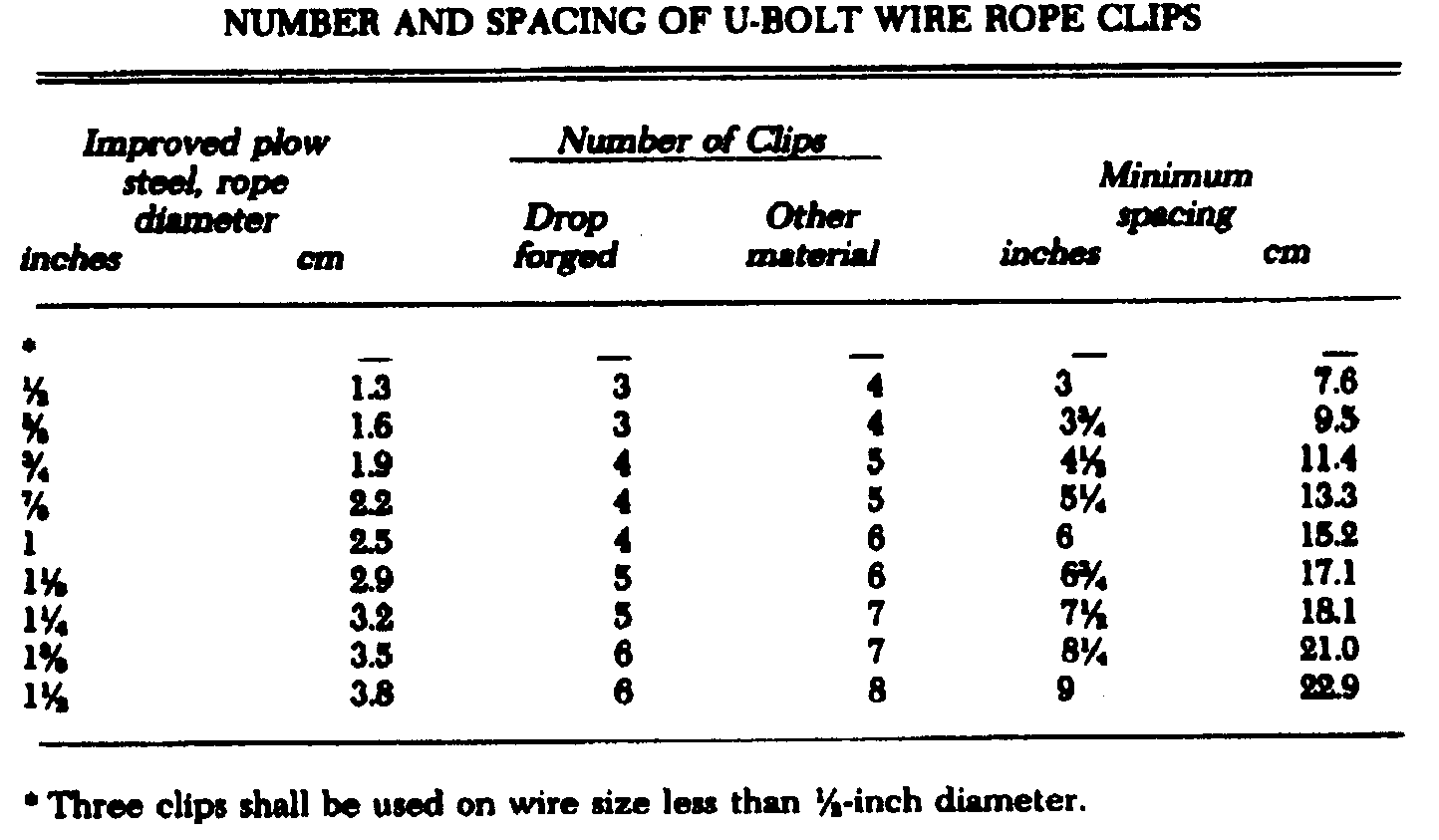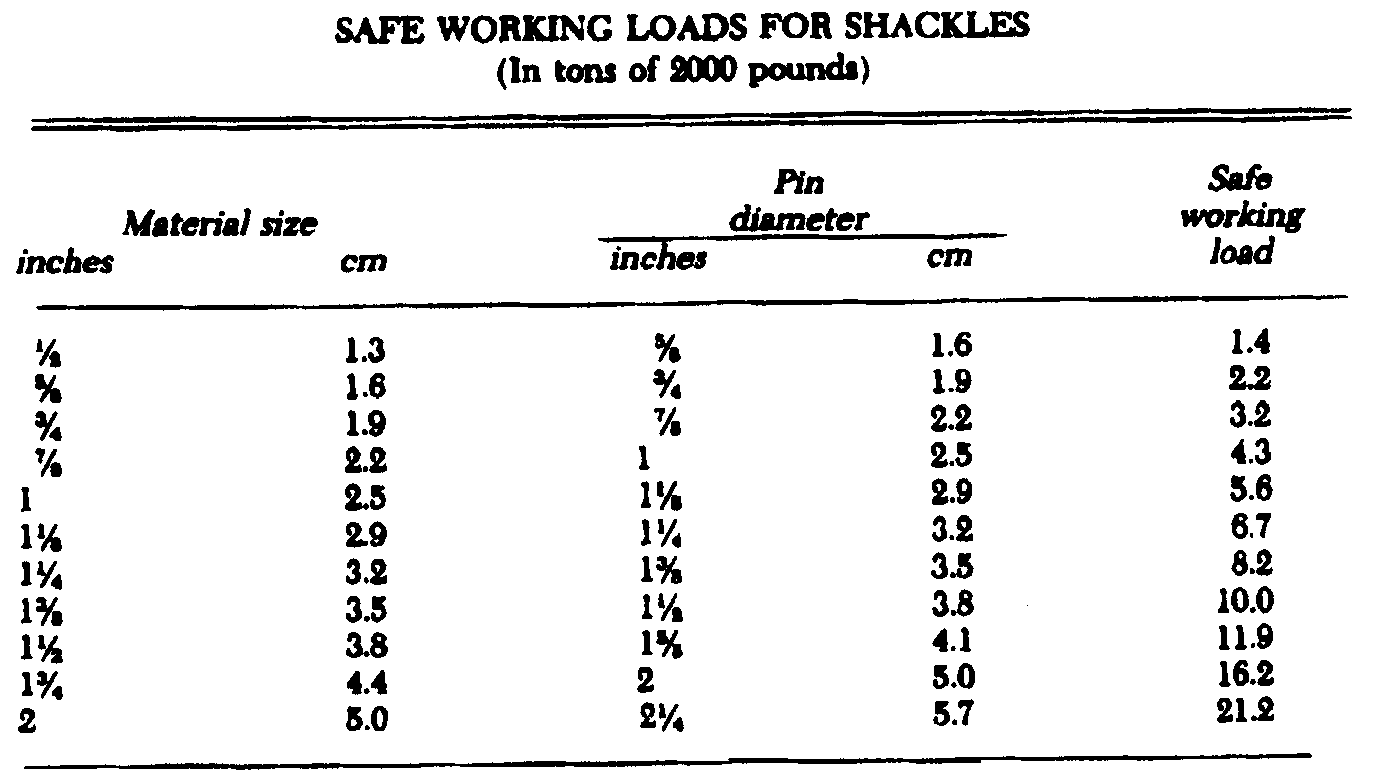 |
California Code of Regulations (Last Updated: August 6, 2014) |
 |
Title 8. Industrial Relations |
 |
Division 1. Department of Industrial Relations |
 |
Chapter 4. Division of Industrial Safety |
 |
Subchapter 7. General Industry Safety Orders |
 |
Group 3. General Plant Equipment and Special Operations |
 |
Article 14. Marine Terminal Operations |
§ 3474. Hooks, Slings, Bridles and Fittings.
Latest version.
- In addition to the following requirements, the provisions of Group 13 shall apply.(a) All hooks, slings, bridles and other fittings shall be of correct size for the work to be done and shall have strength sufficient to sustain the loads imposed upon them.(b) Cargo handling bridles, such as pallet bridles, which are to remain attached to the hoisting gear while hoisting successive drafts, shall be attached by shackles, or other positive means shall be taken to prevent them from becoming accidentally disengaged from the cargo hook.(c) Crane hooks shall be latched or otherwise secured to prevent accidental load disengagement.(d) The manufacturer's recommended safe working loads for hooks shall not be exceeded. After the effective date of this section, hooks other than hand hooks shall be tested in accordance with Section 5022.(e)(1) Jaws of patent clamp-type plate hooks shall be maintained in condition to grip plates securely.(2) Teeth of case hooks shall be maintained in safe condition.(3) Case hooks shall not be used for handling cases unless the cases are specifically designed to be handled by this means.(f) Loads shall be applied to the throat of the hook since loading the point overstresses and bends or springs the hook.(g) Eyes in wire rope bridles, slings, bull wires, or in single parts used for hoisting shall not be formed by wire rope clips or knots.(h) Except for eye splices in the ends of wires and for endless rope slings, each wire rope used in hoisting or lowering, or in bulling cargo, shall consist of one continuous piece without knot or splice.(i)(1) At the completion of each use, loose gear such as slings, chains, bridles, blocks and hooks shall be so placed as to avoid damage to the gear. Loose gear shall be inspected and any defects corrected before reuse.(2) All loose gear shall be inspected by the employer or his authorized representative before each use and when necessary, at intervals during its use, to ensure that it is safe. Any gear which is found upon such inspection to be visibly unsafe shall not be used until it is made safe.(3) Loose gear obtained after the effective date of this section shall bear a legible mark indicating that it has been tested. Single sheave blocks shall be marked with safe working loads and proof test loads. Marks relating to testing shall be identifiable on the related certificates which shall be available.(4) Defective gear shall not be used. Distorted hooks, shackles or similar gear shall be discarded.(j) Interlink wear, not accompanied by stretch in excess of 5 percent, shall be noted and the chain removed from service when maximum allowable wear at any point of link, as indicated in Table MT-2 has been reached.(k) Chain slings shall be removed from service when, due to stretch, the increase in length of a measured section exceeds 5 percent; when a link is bent, twisted or otherwise damaged; or when raised scarfs or defective welds appear.(l) Natural fiber rope. The employer shall ascertain the manufacturer's ratings for the specific natural fiber rope used and have such ratings available at the terminal. The manufacturer's rating shall be adhered to and a minimum design safety factor of five maintained.(m) Wire Rope and Wire Rope Slings.(1) The employer shall ascertain and adhere to the manufacturer's recommended ratings for wire rope and wire rope slings and shall have such ratings available for inspection. When the manufacturer is unable to supply such ratings, the employer shall use the tables for wire rope and wire rope slings found in American National Standard for Slings, ANSI/ASME B30.9-1996. A design safety factor of at least five shall be maintained for the common sizes of running wire in light load use. Wire rope with a safety factor of less than five may be used only:(A) In specialized equipment, such as but not limited to cranes, designed to be used with lesser wire rope safety factors;(B) In accordance with design factors in standing rigging applications; or(C) For heavy lifts or other purposes for which a safety factor of five is impracticable and for which the employer can demonstrate that equivalent safety is ensured.(n) Protruding ends of strands in splices on slings and bridles shall be covered or blunted. Coverings shall be removable so that splices can be examined. Means used to cover or blunt ends shall not damage the wire.(o) Loads requiring continuous manual guidance during handling shall be guided by guide ropes (tag lines) that are long enough to control the load.(p) Thimbles. Properly fitting thimbles shall be used where any rope is secured permanently to a ring, shackle or attachment, where practicable.(q) Shackles.(1) If available, the manufacturer's recommended safe working loads for shackles shall not be exceeded. In the absence of manufacturer's recommendations, Table MT-3 shall apply.(2) Screw pin shackles used aloft in gear, except in cargo hook assemblies, shall have their pins moused or otherwise effectively secured.TABLE MT-1NUMBER AND SPACING OF U-BOLT WIRE ROPE CLIPSNumber of ClipsImproved plowsteel, ropeMinimumdiameterDropOtherspacinginchescmforgedmaterialinchescm*-----1/21.33437.65/81.6343 3/49.53/41.9454 1/311.47/82.2455 1/413.312.546615.21 1/82.9566 3/417.11 1/43.2577 1/218.11 3/83.5678 1/421.01 1/23.868922.9[FNa1] Three clips shall be used on wire size less than 1/2-inch diameter.TABLE MT-2MINIMUM ALLOWABLE CHAIN SIZE AT ANY POINT OF LINKChain SizeInchescmMinimum Allowance Chain size Inchescm1/4.61 3/64.53/81.013/64.81/21.325/641.05/81.631/641.23/41.918/321.57/82.245/641.812.513/162.11 1/82.929/322.31 1/43.212.51 3/83.51 5/322.81 1/23.81 3/163.01 3/44.41 13/323.5SAFE WORKING LOADS FOR SHACKLES(In tons of 2000 pounds)Material sizePin diameterSafe working loadinchescminchescm1/21.35/81.61.45/81.63/41.92.23/41.97/82.23.27/82.212.54.312.51 1/82.95.61 1/82.91 1/43.26.71 1/43.21 3/83.58.21 3/83.51 1/23.810.01 1/23.81 5/84.111.91 3/44.425.016.225.02 1/45.721.2HISTORY1. Amendment filed 12-12-84; effective thirtieth day thereafter (Register 84. No. 50).2. Amendment of subsection (m)(1) filed 5-24-99; operative 6-23-99 (Register 99, No. 22).HISTORY1. Repealer of Tables MT-1 through MT-5, Mt-7, MT-8 and renumbering and amendment of Tables MT-6, MT-9, MT-10 to Tables MT-1 through MT-3 filed 12-12-84; efffective thirtieth day thereafter (Register 84, No. 50).
Note
Note: Authority cited: Section 142.3 Labor Code. Reference: Section 142.3 Labor Code.


